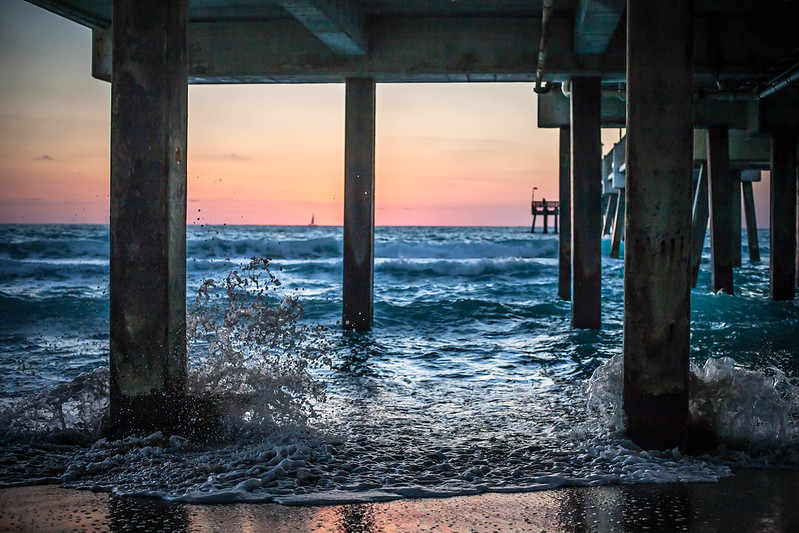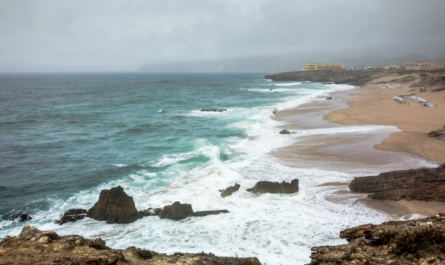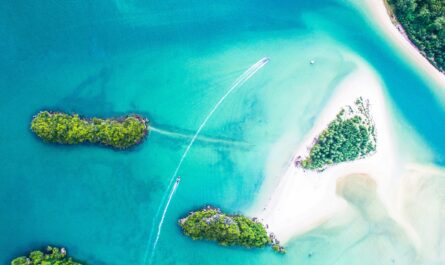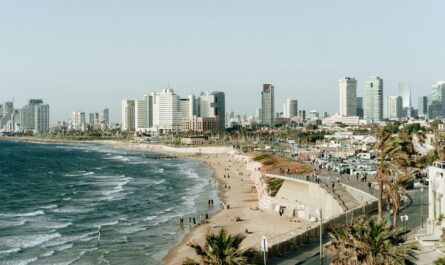The Atlantic Ocean, stretching across vast expanses from the icy waters of the Arctic to the temperate and tropical regions of the Southern Hemisphere, is not only a hub of marine biodiversity but also a critical component of Earth’s climate system. However, beneath the beauty of its deep blue waters lies a growing environmental catastrophe: plastic pollution. This modern-day crisis has led to the formation of the Great Atlantic Garbage Patch, a swirling collection of plastic debris and other waste accumulating in the Atlantic Ocean.
While the Pacific Garbage Patch often grabs headlines due to its sheer size, the Atlantic is no less affected by the menace of plastic pollution. With billions of tons of plastic produced annually worldwide, the Atlantic Ocean has become a major repository for this durable but environmentally destructive material. In this article, we will explore the origins of the Great Atlantic Garbage Patch, its impact on marine ecosystems, how it contributes to the global plastic crisis, and what is being done to address this growing threat.
What Is the Great Atlantic Garbage Patch?
The term “Great Atlantic Garbage Patch” refers to a vast accumulation of plastic debris and microplastics trapped by ocean currents in the Atlantic Ocean. These patches are not solid islands of trash but rather dispersed fields of floating debris. Much of the waste consists of tiny plastic particles, also known as microplastics, which form when larger pieces of plastic degrade over time.
The Atlantic Garbage Patch is not confined to a single location. Instead, it spans various regions of the North and South Atlantic, primarily influenced by the movement of ocean gyres—large systems of circulating ocean currents. In the North Atlantic, the patch is primarily located within the North Atlantic Subtropical Gyre, which is bordered by the Gulf Stream, North Atlantic Current, Canary Current, and North Atlantic Equatorial Current. These powerful currents trap plastic and other debris within a relatively contained area, where it circulates indefinitely.
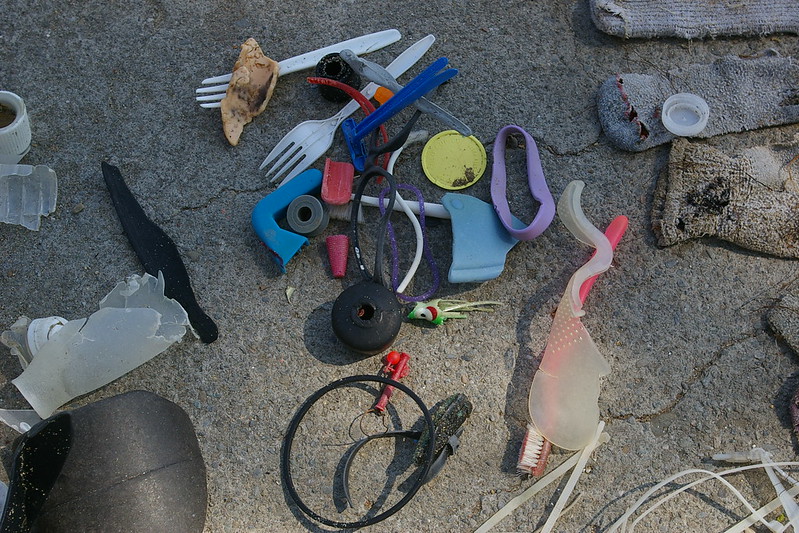
The Origins of the Plastic Crisis
The rise of plastic as a ubiquitous material began in the mid-20th century, with innovations that made it cheap, versatile, and durable. However, the very properties that made plastic so useful also turned it into a long-lasting environmental problem. Unlike organic materials that decompose naturally, plastic does not break down easily. Instead, it fragments into smaller and smaller pieces over hundreds or even thousands of years.
The widespread use of plastic has skyrocketed over the past decades, and today, an estimated 300 million tons of plastic are produced each year. Roughly 8 million tons of this plastic enter the oceans annually, contributing to the growing problem of marine plastic pollution. The sources of ocean plastic are varied, but they include:
- Land-Based Sources: Mismanaged waste, especially in coastal areas, is one of the leading causes of ocean plastic pollution. Plastic bags, bottles, packaging, and other single-use items often find their way into rivers and streams, which ultimately carry them into the ocean.
- Marine-Based Sources: Fishing nets, ropes, and gear are another significant source of plastic pollution. Known as ghost nets, these abandoned or lost fishing tools continue to drift in the ocean, trapping marine life and contributing to the debris fields.
- Shipping and Offshore Industry: Cargo ships, oil platforms, and offshore operations also contribute to marine plastic pollution, as waste and plastic materials are often discarded or lost at sea.
- Tourism: Popular coastal and island destinations that see a high volume of tourists often face an influx of plastic waste, as visitors leave behind plastic bottles, bags, and other litter that eventually makes its way into the ocean.
The Impact of the Great Atlantic Garbage Patch
The Great Atlantic Garbage Patch poses a severe threat to marine ecosystems, the health of the ocean, and even human livelihoods. The presence of plastic in the ocean has far-reaching effects, impacting marine life at every level of the food chain, from microscopic plankton to the largest marine predators.
1. Impact on Marine Life
Marine animals, including fish, seabirds, turtles, and marine mammals, are highly susceptible to the harmful effects of plastic pollution. Many marine species mistake plastic debris for food, leading to ingestion. Turtles, for example, often confuse plastic bags with jellyfish, a staple of their diet. Birds and fish ingest small plastic fragments, mistaking them for plankton or other prey. The ingestion of plastic can lead to malnutrition, intestinal blockages, and even death.
Once ingested, plastic does not break down within an animal’s digestive system. Instead, it accumulates, filling their stomachs without providing any nutrition. This often leads to starvation, as the animals feel full but are unable to absorb the nutrients they need. The plastic waste also releases toxic chemicals, such as bisphenol A (BPA) and phthalates, which can accumulate in the tissues of marine organisms, leading to long-term health effects.
Entanglement is another major issue. Seals, dolphins, and other marine animals often become ensnared in discarded fishing nets, ropes, or plastic rings, which can lead to injury, drowning, or impaired movement. Ghost fishing, the process by which abandoned fishing gear continues to trap and kill marine life, is a particular concern in the Atlantic, where extensive fishing activity leaves behind large amounts of derelict gear.
2. Disruption of Marine Ecosystems
Plastic pollution has far-reaching consequences for entire marine ecosystems. Microplastics—tiny plastic particles less than 5 millimeters in size—are particularly problematic. These particles are often mistaken for food by zooplankton, the small organisms that form the base of the marine food web. As microplastics are consumed by plankton, they enter the food chain, moving up to larger predators such as fish, birds, and marine mammals.
The accumulation of plastics in the marine food chain can have cascading effects. For example, microplastic ingestion can disrupt reproduction, growth, and survival rates in marine species, potentially leading to population declines and altering predator-prey dynamics.
In addition to biological impacts, the physical presence of large plastic debris, such as fishing nets, can damage fragile marine habitats. Coral reefs, which are already under threat from climate change and ocean acidification, can suffer further damage from plastic entanglement, which breaks or smothers coral colonies.
3. Economic Consequences
The economic impacts of plastic pollution in the Atlantic are substantial. The fishing industry, tourism, and coastal economies are all directly affected by the Great Atlantic Garbage Patch. For the fishing industry, the loss of marine biodiversity, the decline of fish stocks, and the damage caused by ghost fishing gear can lead to reduced catches and financial losses.
Tourism is also at risk, particularly for coastal communities and island nations that rely on clean, pristine beaches to attract visitors. Beaches littered with plastic waste deter tourists, leading to revenue losses for local businesses. Moreover, the cost of cleaning up plastic pollution is significant. Governments and municipalities spend millions of dollars annually to remove plastic debris from coastlines and waterways.
The Role of Ocean Currents in Forming the Atlantic Garbage Patch
Ocean currents play a critical role in the formation and maintenance of the Great Atlantic Garbage Patch. The North Atlantic Subtropical Gyre, a system of circulating ocean currents, acts as a conveyor belt for plastic debris. As plastic enters the ocean from coastal areas or is discarded at sea, it is carried by these currents into the central gyre, where it becomes trapped.
Once inside the gyre, plastic waste can remain for years or even decades. The relatively calm waters of the gyre prevent the debris from dispersing, allowing it to accumulate over time. While the Atlantic Garbage Patch is not as densely packed as the Pacific Garbage Patch, it still contains large amounts of plastic, much of it in the form of microplastics that are difficult to detect and remove.
Addressing the Plastic Crisis: Solutions and Strategies
The Great Atlantic Garbage Patch is a complex and daunting environmental challenge, but efforts to combat plastic pollution are gaining momentum. A combination of international cooperation, innovative technologies, and local action is necessary to address the problem at its source and reduce the amount of plastic entering the ocean.
1. Reducing Plastic Production and Consumption
One of the most effective ways to combat plastic pollution is to reduce the production and consumption of single-use plastics. Governments around the world are beginning to implement bans and restrictions on plastic bags, straws, and other disposable plastic items. In the European Union, for example, a 2019 directive banned a range of single-use plastic products, including cutlery, plates, and cotton swabs. Similar measures are being adopted in cities and countries across the Atlantic region, including the United States and Latin American nations.
At the individual level, reducing plastic consumption through reusable alternatives, such as metal water bottles, cloth shopping bags, and glass containers, can help cut down on the amount of plastic waste generated.
2. Improving Waste Management and Recycling
In many parts of the world, particularly in developing countries, poor waste management practices contribute significantly to ocean plastic pollution. Investing in better waste collection and recycling infrastructure can help prevent plastic from reaching rivers, beaches, and the ocean.
Recycling rates for plastic remain low globally, with only about 9% of all plastic ever produced being recycled. By improving recycling facilities and incentivizing the use of recycled materials, governments and industries can reduce the amount of plastic that ends up in landfills and the ocean.
3. Ocean Cleanup Technologies
Several innovative technologies have been developed to tackle the issue of plastic pollution directly in the ocean. The Ocean Cleanup project, for example, is an ambitious initiative that aims to remove large amounts of plastic from the world’s oceans using passive cleanup systems. These systems consist of floating barriers that capture plastic debris as it drifts with the ocean currents, allowing it to be collected and removed.
Other approaches focus on preventing plastic from reaching the ocean in the first place. Interceptor devices, placed in rivers and coastal areas, capture plastic waste before it enters the ocean, reducing the flow of plastic into the marine environment.
4. Raising Public Awareness and Advocacy
Public awareness campaigns and environmental education programs are crucial for changing behavior and encouraging action to combat plastic pollution. Many nonprofit organizations and advocacy groups are working to raise awareness about the impact of plastic pollution on marine life and the environment. These efforts often include beach cleanups, educational workshops, and media campaigns that highlight the urgency of addressing the plastic crisis.
Additionally, advocacy for stronger regulations on plastic production, use, and disposal can help drive policy changes at the local, national, and international levels.
Conclusion: A Collective Effort for a Cleaner Ocean
The Great Atlantic Garbage Patch is a stark reminder of the growing plastic crisis facing our oceans. The accumulation of plastic waste in the Atlantic, driven by human activity and ocean currents, threatens marine life, ecosystems, and the economies of coastal communities. While the problem is immense, it is not insurmountable.
Addressing the plastic crisis requires a multifaceted approach that includes reducing plastic production, improving waste management, supporting ocean cleanup technologies, and raising public awareness. Governments, industries, and individuals all have a role to play in protecting the health of our oceans and ensuring that future generations can enjoy a clean and vibrant marine environment.
As efforts to tackle plastic pollution continue, there is hope that the Great Atlantic Garbage Patch, along with other marine debris fields around the world, can be mitigated, and the Atlantic Ocean can once again thrive as a vital part of our planet’s ecosystem.
